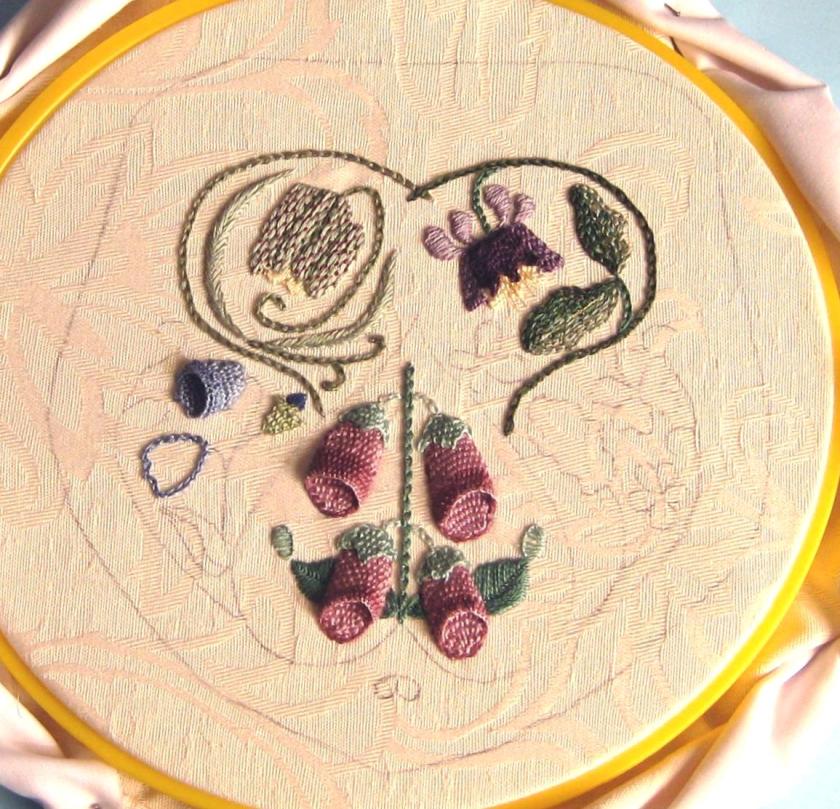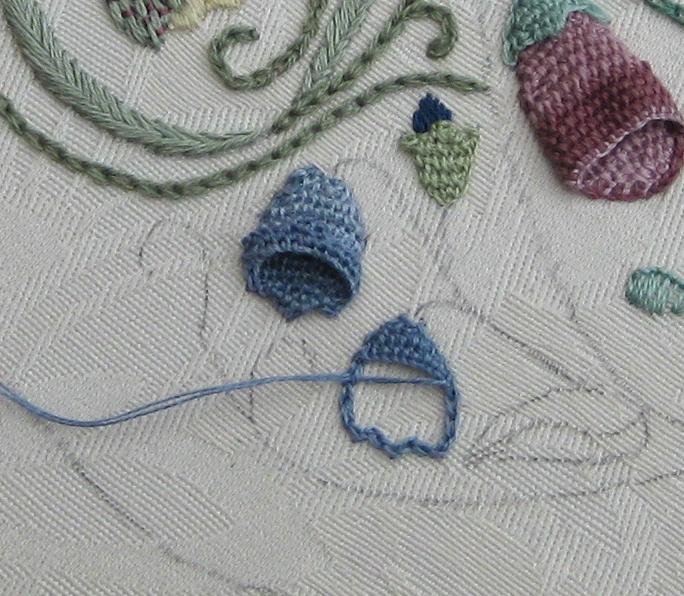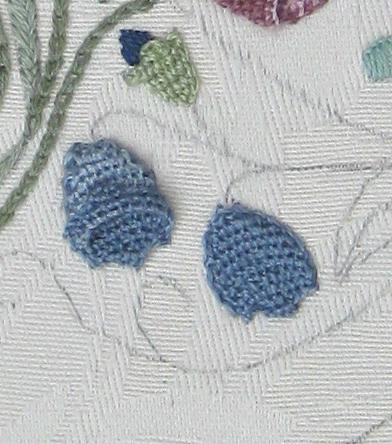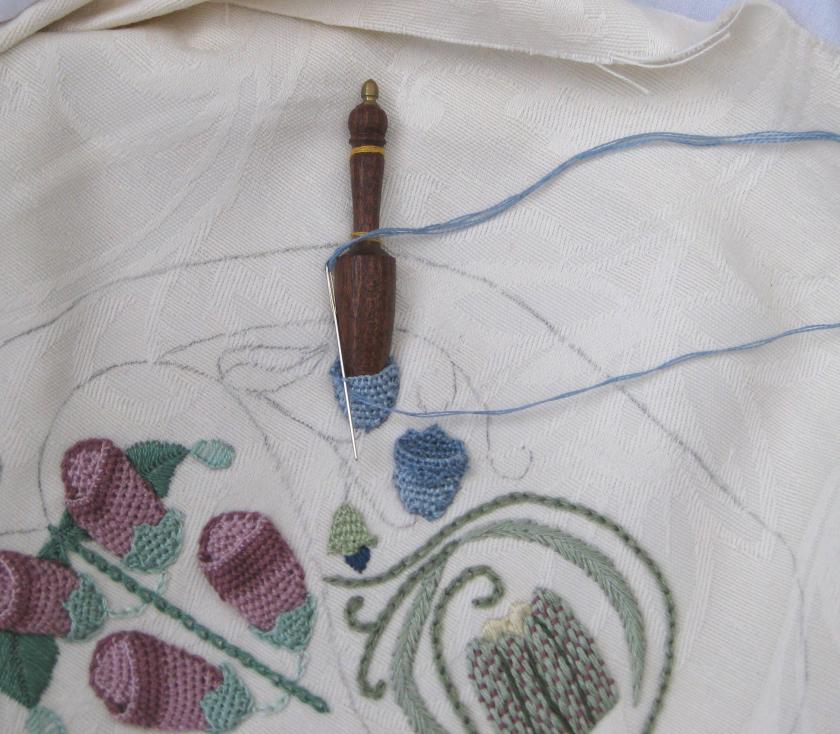I’ve got to the stage with this project that I often do with embroidery….I’m starting to look around for what my next project will be, so there’s a risk that if I put this one down for a while, I might never pick it up again, which would be a shame, as I’ve got so far with it! So, this weekend I made sure I gave myself enough time to get a serious chunk of the embroidery done, to keep my interest up!
 This little butterfly is just a ‘filler insect’ in this projet, but I’d got to the stage where I didn’t even bother to read the instructions to see how Shirley Holdaway (in her book ‘Festive Elizabethan Creations’), expected me to do it…I’d decided I wanted it to be a yellow butterfly, with bead highlights on the wings. The wings were worked in long and short stitch, using Anchor 306 deep yellow and 292 pale yellow, and the body and antennae were worked in one strand of dark green/grey (just a spare bit I had in my workbox, so I don’t know what shade it was!).
This little butterfly is just a ‘filler insect’ in this projet, but I’d got to the stage where I didn’t even bother to read the instructions to see how Shirley Holdaway (in her book ‘Festive Elizabethan Creations’), expected me to do it…I’d decided I wanted it to be a yellow butterfly, with bead highlights on the wings. The wings were worked in long and short stitch, using Anchor 306 deep yellow and 292 pale yellow, and the body and antennae were worked in one strand of dark green/grey (just a spare bit I had in my workbox, so I don’t know what shade it was!).
At this point, I finished off the foxglove flowers. The instructions said to take a small ball of thread ends in pink shades, and glue them high up inside the bell of each foxglove flower, to hold the tube open. I didn’t want to risk getting glue on a part of the stitching that would be visible, so I just poked the ball of thread hard up into the flower ends, and they seem to be staying put! The method certainly works to hold the curved part of the flower up, and stop it squashing flat.
I had left the beading highlights until now, in case my thread kept catching on the beads as I was stitching other areas of the bag. So, I stitched on three or four maroon seed beads to the mouth of each flower at this point, which actually made them look a lot more ‘finished’ than I’d expected. In this photo, you can see the tiny ladybird as well. There is also a ladybird on the other side of the bag, which I like better, as it has its silver wings showing on that side .
 As with the first side, the last thing to add was the clusters of frosted yellow beads, in groups of three. These are stitched fairly randomly over the bag, filling any gaps that seem too ’empty’. One cluster had to be placed quite carefully, though, as I had managed to attract a speck of soot (we have an open fireplace in our living room!) which had lodged itself onto the top left hand corner of the stitching, and trying to wash it off only made the mark worse. Fortunately, three seed beads hid the mark completely. Now I keep my stitching-in-progress covered up 🙂
As with the first side, the last thing to add was the clusters of frosted yellow beads, in groups of three. These are stitched fairly randomly over the bag, filling any gaps that seem too ’empty’. One cluster had to be placed quite carefully, though, as I had managed to attract a speck of soot (we have an open fireplace in our living room!) which had lodged itself onto the top left hand corner of the stitching, and trying to wash it off only made the mark worse. Fortunately, three seed beads hid the mark completely. Now I keep my stitching-in-progress covered up 🙂
So, at this point, the second side of the bag looks like this.
~~~~~~~~~~~~~~~~~~~~~~~~~~~~~~~~~~


















